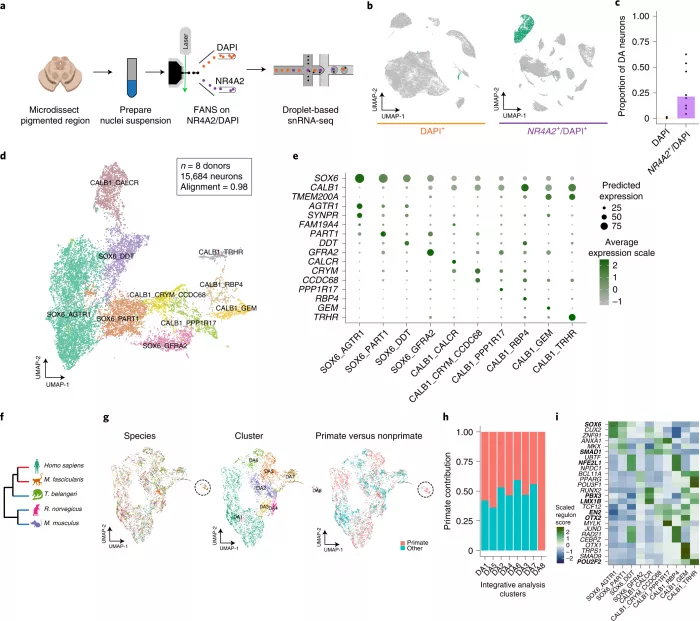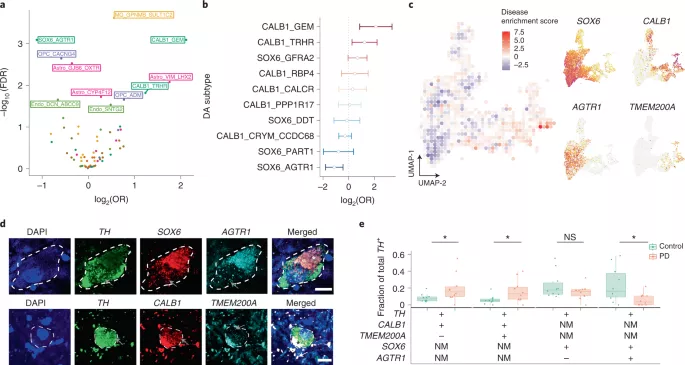Scientists exploring the biological basis of Parkinson's disease have made an important discovery, which provides new clues for the death of cells driving neurodegeneration associated with the disease This breakthrough helps explain why some neurons are vulnerable to this form of cell death and raises some new possibilities on how to prevent it.

One of the hallmarks of Parkinson's disease is the death of neurons that produce the neurotransmitter dopamine. As dopamine decreases, motor skills and other symptoms of the disease worsen, so designing ways to support its supply is a key priority for scientists in the field.
This may come from existing drugs, such as levodopa, which enters the brain and converts it into dopamine; Or electrical stimulation, which is an established treatment technology, is constantly improving. However, since the loss of neurons is irreversible, we also see scientists focus on the technology of replacing them with neurons cultivated by stem cells, and some therapies have recently entered the stage of human trials.

Scientists at MIT and Harvard's broad Institute are trying to solve this problem by trying to better understand the causes of neuronal death. Dopamine producing neurons lost in Parkinson's disease are located in a structure deep in the midbrain called substantia nigra, and scientists have been unable to understand the molecular features that make them particularly vulnerable to death.
The team's new study involves analyzing postmortem brain samples from patients with Parkinson's disease and healthy subjects and comparing their single-cell gene expression. This allowed them to identify different dopamine neurons in the human midbrain. Although previous studies have shown that there are two or three types, scientists have identified a total of 10 types. Among the 10 families, scientists identified a cell type that they described as particularly vulnerable, determined by the expression of certain transcription factors and a gene called AGTR1.

Macosko said: "Our results help explain a long-standing mystery about Parkinson's disease: why does this particular subset of dopamine cells die in the midbrain. These dying cells express more risk-related variants than other cell types and similar cells in people without Parkinson's disease. Therefore, human genetics plays a role in these cells, making them more vulnerable to cell death and other related dopamine Compared with neuronal subtypes, they have a low degree of death and do not express so many of these risk genes. "

This points out the specific mechanisms leading to cell death in Parkinson's disease, and these vulnerabilities together constitute a gene expression feature of high-risk neurons. This in turn lays the foundation for ongoing efforts to design dopamine producing neurons in the laboratory. Researchers have demonstrated the ability to grow these neurons from stem cells and even how they can restore damaged circuits in the midbrain and improve motor symptoms.
"There are many efforts to design dopamine neurons in Petri dishes for transplantation into patients with Parkinson's disease. What we report here is the actual gene expression characteristics of vulnerable neurons. This information will contribute to the efforts of these groups," macosko said
In addition, since these mechanisms have previously appeared in mouse studies, but not in human cells, this study also demonstrated a method to visualize disease characteristics in neurons of postmortem brain samples. This raises the prospect of not only transplanting engineered cells to produce dopamine, but also alternative therapies for the signaling pathways that lead to cell death.
"There are already some neuronal experimental gene therapy trials for Parkinson's disease, and this study highlights the specific cell types and pathways that these gene therapy efforts should focus on," macosko said
The study was published in Nature 》In the magazine.